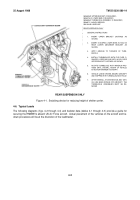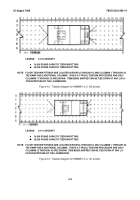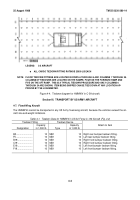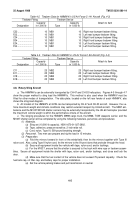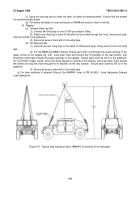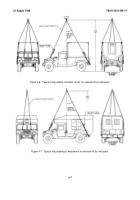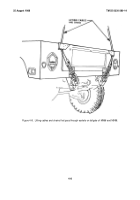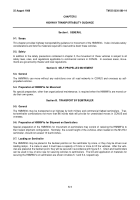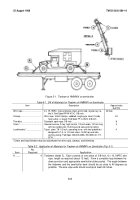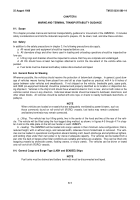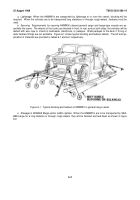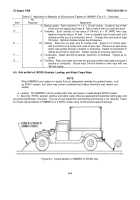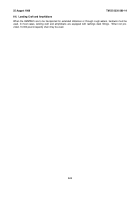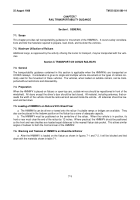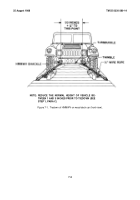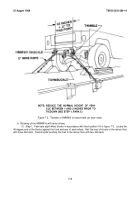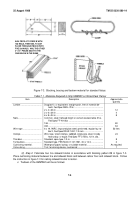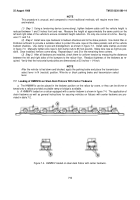TM-55-2320-280-14 - Page 27 of 44
25 August 1988
TM 55-2320-280-14
CHAPTER 6
MARINE AND TERMINAL TRANSPORTABILITY GUIDANCE
6-1.
Scope
This chapter provides marine and terminal transportability guidance for movement of the HMMWVs.
It includes
safety considerations and lists the materials required to prepare, lift, tie down, load, and stow these vehicles.
6-2.
Safety
In addition to the safety precautions in chapter 3, the following precautions also apply.
a.
All vessel gear and equipment should be inspected before use.
b.
All stevedore slings and other items used in loading and unloading operations should be inspected be-
fore use.
c.
Lifting rings and shackles should be inspected to ensure that they are complete and undamaged.
d.
All lifts should have at least two taglines attached to control the movement of the vehicle while sus-
pended.
e.
Fuel tanks must be drained and battery cables disconnected and taped.
6-3.
General Rules for Stowing
Whenever possible, the vehicles should receive the protection of below-deck stowage.
In general, good stow-
age of vehicles means having them placed fore and aft as close together as practical, with 4 to 6 inches of
space between outer vehicles and sweatboards.
If not shipped on the vehicle, breakable parts, spare parts,
and OEM (on-equipment material) should be protected and properly identified as to location or disposition dur-
ing shipment.
Vehicles in the ship's hold should have wheels blocked in front, in rear, and on both sides so the
vehicles cannot move in any direction.
Individual wheel blocks should be braced to bulkhead, stanchions, and
other wheel blocks.
All vehicles should be lashed with wire rope or chains to nearby bulkheads stanchions, or
padeyes.
NOTE
When vehicles are loaded on vessels that are adequately ventilated by power blowers, such as
those commonly found on roll-on/roll-off (RORO) vessels, fuel tanks may remain undrained
and battery terminals may remain connected.
a. Lifting.
The vehicle has four lifting points, two in the center of the hood and two at the rear of the vehi-
cle.
The vehicle will be lifted using the four-legged sling method, as shown, in figures 4-5 through 4-7 in chap-
ter 4 and on the data plate on the left rear fender or each HMMWV.
b.
Loading.
The HMMWVs will be loaded onto cargo vessels in their minimum cube configurations; that is,
reduced height, with or without cargo, and reduced width, sideview mirrors folded back or removed.
The vehi-
cles can be loaded in operational configuration aboard landing craft, beach discharge and amphibious lighters,
and landing ships under their own power or by crane of adequate capacity.
The vehicles can be loaded from a
pier onto the deck of barges when tidal conditions are suitable and ramps are available.
They can be lifted onto
seagoing vessels by shoreside cranes, floating cranes, or ship's cranes.
The vehicles can be driven or towed
onto roll-on/roll-off (RORO) vessels.
6-4.
General Cargo and Barge-Type (LASH and SEABEE) Ships
NOTE
Fuel tanks must be drained and battery terminals must be disconnected and taped.
6-1
Back to Top

